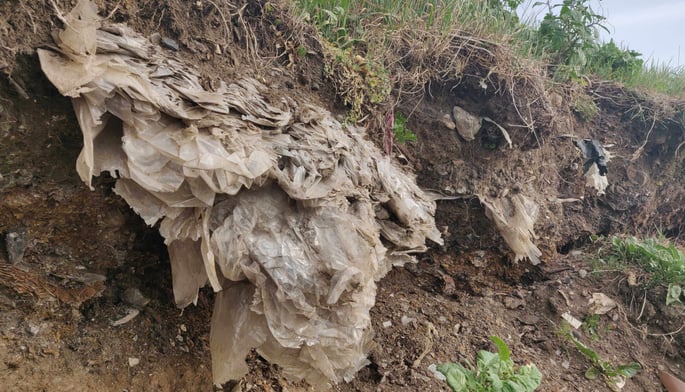Landfill
'A case for buried culture: from an unknown known to a known unknown', a paper by Assaf Nativ (2022)
Nativ examines 'Buried Culture' — humanly modified packages of sediments and artifacts in landfill - as an a-social, posthuman, cultural being. A 20th century landfill near Tel Aviv in Israel provides a case study. His argument could potentially be applied not just to landfill but also to some other types of archaeosphere material.
Nativ, Assaf. 2022. A case for buried culture: from an unknown known to a known unknown" Humans 2:3, 74-94. doi: 10.3390/humans2030006 Open access
Gaining ground: bomb rubble, reclamation and revenance. A paper by Jonathan Gardner (2023)
As the author states, 'Vast quantities of waste rubble produced through demolition, natural disasters and conflict form part of the globe-spanning, anthropogenic deposit that has been called the “archaeosphere”.' In this highly interesting paper he examines the deposition of bomb rubble on Hackney Marshes and Leighton Marshes in London, and the uses to which this new-made land has been put.
It is worth noting here that the raised land of Hackney Marshes roughly corresponds to the Teufelsberg in Berlin. Both are comprised of WW2 war rubble, moved from the city centre into the outskirts. In the case of the Teufelsberg the rubble was mounded up to form a hill, the highest point in the city, visible for quite a distance around. It accordingly receives quite a lot of attention (for example, in the literature about the Anthropocene). In the case of Hackney Marshes the same type of material was laid flat to a depth of several metres over wider areas, filling in hollows and building up ground level but not mounded up into a hill as such. The origin of the material as war rubble has been largely forgotten about and unremarked upon, which is what makes this quite a special paper.
Gardner, J. (2023). Gaining Ground: Bomb Rubble, Reclamation and Revenance. Journal of Contemporary Archaeology, 10 (1), 25-48. doi: 10.1558/jca.25782 Online access
'Why landfill deposits are a distinguishing feature of the Anthropocene', a paper by Vaverková, M. D., & Koda, E. (2023)
The authors are surely right to identify landfills as important components of the archaeosphere which must be taken into account in any definition of the Anthropocene, and they give a good overview of the range, scale and extent of different types of landfill and their ecological impacts. Where they go slightly wrong, in my humble opinion, is in taking such evidence as support for a proposed Anthropocene epoch starting in 1950. As the authors themselves make clear, landfills as a global phenomenon have their roots in thousands of years of waste disposal in the ground, notably associated with the Industrial Revolution as well as modern consumer and throwaway society. They did not suddenly come into being in the mid 20th century. Evidence provided by such diachronous deposits is far more in keeping with an unfolding and intensifying Anthropocene Event, rather than a fixed epoch.
Vaverková, M. D., & Koda, E. (2023). Why landfill deposits are a distinguishing feature of the Anthropocene.The Anthropocene Review, 10 (2), 463-473. https://doi.org/10.1177/20530196231170370 (not open access)


30-year old plastics cascading like a frozen waterfall from the upper part of landfill deposits onto the foreshore of the River Thames at East Tilbury, near London. In this case the landfill strata started to form in the early 1900s, and dumping continued intermittently up to the 1990s. Photo by Zeb, on behalf of archaeosphere.com.